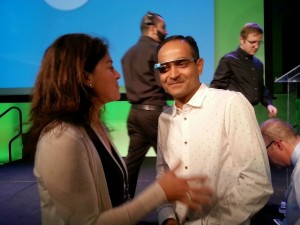 You have a larger audience than you think and you might be ignoring a big percentage of it. They are out there, in many stages of readiness to purchase. Some have done business with you, will return and tell others how great you are. Others are ready to buy from you or are thinking about buying from you. Some of them have never heard of you but still need you.
You have a larger audience than you think and you might be ignoring a big percentage of it. They are out there, in many stages of readiness to purchase. Some have done business with you, will return and tell others how great you are. Others are ready to buy from you or are thinking about buying from you. Some of them have never heard of you but still need you.
The difference between average marketing and great marketing, according to Avinash Kaushik is that great marketers pay attention and really think about how they market to each segment of their audience. Average marketers worry only about those who are ready to buy. When you do that, you inadvertently ignore a huge percentage of your audience.
This is isn’t entirely new, but I love the way he frames the segments and I’ve taken this and applied it to our own marketing strategies moving forward. Here are the stages:
- See: The people out there who aren’t aware you exist but have a need you fulfill
- Think: They are thinking about doing business with you: Asking for recommendations, researching, narrowing down the options
- Do: Ready to buy now
- Care: Have bought from you not once; but twice. The philosophy at Lands’ End, he said, is that the first purchase could be by accident. The second purchase is by design and makes a loyal buyer who cares
The “great” marketing plan addresses each of these audiences. (Yes, it’s not new – it’s also called marketing to each stage of your sales funnel). It requires thinking about the questions, needs and pain points each has at the four stages and using the right distribution channel to reach them.
For example, your email marketing works really well for the “Care” and the “Think” audience, but if you’re sending everyone the same messages and haven’t segmented your email list accordingly, you’re missing the mark. Social might do well for all four of your segments, but does your content comprise a mix for each audience?
 I love with this approach (and therefore have a serious brain crush on Avinash as evidenced by this image taken by Shashi Bellamkonda where I’m asking Avinash to have my brain baby.) because it forces marketers to think about audiences instead of distribution channels.
I love with this approach (and therefore have a serious brain crush on Avinash as evidenced by this image taken by Shashi Bellamkonda where I’m asking Avinash to have my brain baby.) because it forces marketers to think about audiences instead of distribution channels.
Rather than having a social marketing plan, you have a plan for the “See phase,” which might include social, pay per click, direct mail and events, for example.
Your “Think plan” might include email, social, PPC, blog content – but how will your social content and PPC content differ in this phase from the “See phase”?
And here is where it gets even better: You create a measurement plan that aligns with these four phases that might look something like this:
- Conversation: (See) Comments and engagement per post.
- Applause: (Think): Likes per post.
- Economic Value: (Do): Revenue
- Amplification: (Care) Shares and retweets.
I’m going to write more on tracking and measuring later this week. You can also read more on Avinash’s blog which might be one of the best on measurement and analytics. He’s also written a few books on the topic.
You’ll notice there is no mention of followers and fans here. Followers and fans are of course necessary to achieve any of the above metrics, but shifting the focus to actions like engagement and shares, and purchases forces marketers to keep the tactics directed at what our audience is doing with all the content we are sharing and creating.
There is no limit to the number of irrelevant eyeballs you can reach. – Avinash Kaushik
What separates the great marketers from the average is understanding this distinction and basing your marketing strategy on audiences, not distribution channels.
And I’d love to hear what you think.
This is a modified version of a post I originally wrote for Vocus.
[ssba]
This is my first time pay a quick visit at here and i am really happy to read everthing at one place
Thanks for sharing. I read many of your blog posts, cool, your blog is very good.
For the reason that the admin of this site is working, no uncertainty very quickly it will be renowned, due to its quality contents.
I do not even understand how I ended up here, but I assumed this publish used to be great